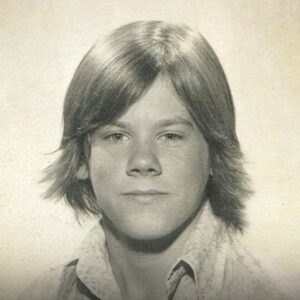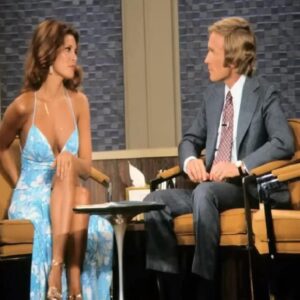Every week from now until The Batman hits theaters, we’re watching Batman’s theatrical films in chronological order. This week: The plant lady cometh, now streaming on Hulu. Last week: Orgasmic rubber nipples. See you next Waynesday, when the beginning re-begins.
You could toss out Arnold Schwarzenegger‘s last 30 years of movies without losing anything better than the sick joke of Sabotage, and then you’d never have to watch him torpedo Batman & Robin again. He’s not the only problem with the 1997 flop. But many of its catastrophes are now defensible, if not celebrated.
Joel Schumacher outlandished his Dynamic Duo’s world. Diamond hockey laser duels in a museum full of disco-ball glaciers, a high-tech observatory balanced in the skyscraper hands of a Chrysler-sized Greco-Roman statue, so much voluptuous decorative foliage: This was production designer Barbara Ling’s effervescent Mega-Gotham. And costume designers Ingrid Ferrin and Robert Turturice lathered every uniform with three layers of exoskeletal flair. Freeze the right frame and you could be looking at the posters for Thor: Ragnarok or Wonder Woman 1984, and few scenes knock right on Birds of Prey‘s door.
Consider the motorcycles. Barbara (Alicia Silverstone) sneaks out of Wayne Manor to make underground money in a downtown neon gangland. Coolio plays the Banker, who runs the local street races. Nicky Katt plays Spike, a deathbike marauder wearing flagrant lipstick beneath red-black eyeshadow. There is a puffy yellow mohawk on his helmet, and his leather jacket pokes out stalagmite shoulders. He looks like Super Street Fighter II Turbo smelled. The motorcyclists roll through a warehouse and along a concrete river, and then turn right onto a hundred-story skybridge.
There’s no coherent sense of space, and did somebody say Coolio? Schumacher was gay, and the Batman & Robin reconstruction project depends on tantalizing subtext. Subversion gives a free pass to incoherence, and our century loves treasure-hunting last century’s secret queer history. Poison Ivy (Uma Thurman) resembles a drag queen. That would’ve been a conventional insult in the horrible 1990s, but I mean it as a compliment. (Let’s finally make hair horns happen!) Today, she would have a solid social media following dedicated to Lash Positivity, and Amy Klobuchar’s people would’ve begged her for an IG Live interview. Meanwhile, Elle Macpherson plays the beard-iest Batman love interest, arm candy for parties who barely knows her one-year boyfriend. “I’m not the marrying kind,” Bruce tells her. “There are things about me you wouldn’t understand.” Is this even subtext?
Because Ivy cares about climate change, she will soon be the story’s only recognizable hero. “Forget the stars, look here to earth!” she pleads with Bruce Wayne (George Clooney) as he bankrolls a new space project. “You spoil her lands, poison her oceans, blacken her skies. You’re killing her!” Subtract the homicidal tendences and she sounds like any teenager hoping Bezos doesn’t blow billions on his space colony while the rainforest burns. The people of Gotham cackle when Ivy promises “a day of reckoning.” Viewed today, that laugh sounds like the firestorm outside your window.
Does Batman & Robin deserve to be rescued? Clooney built his second act by disowning it. The late Schumacher sounds nonchalant but defensive in his DVD commentary. “There was enormous pressure on us,” he explains, “To create more inventions in the film that could be turned into toys.” He insists he wanted to adapt Batman: Year One, the acclaimed Frank Miller-David Mazzucchelli gutter battle book. This was the political thing to say, before Miller’s acolytes crushed two decades under their bootheels. Now it’s torture when Schumacher swears he wanted a “much smaller, intimate, darker, younger Batman.” WE. HAVE. GOT. THAT. COVERED. But who will give us Poison Ivy stripteasing out of a pink gorilla costume, and call it a kid’s movie?
That’s pure Blonde Venus burlesque. And the ultimate salvage job on Batman & Robin won’t even require camp reclamation. In 1997, the gigantic sets and collectible henchmen were toy-commercial embarrassments of merchandising madness. Now you treasure the glorious (lost?) art of physical set design and non-mocap costumes. Digital effects age bad quick, and some wonderful recent superhero movies already look precarious. But when Batman, Robin (Chris O’Donnell), and Batgirl motor through a frozen Gotham, rocking silver-plated costumes and driving various sexy Bat-snowplows — well, those toys were real toys.
But there is a lot of CGI, which looks awful and epitomizes the ambient laziness. Silverstone comes “all the way from England” with zero attempted accent. When she casually mentions how her parents died in a car crash, the camera’s in an extreme long shot, more interested in the shrubbery. Schumacher’s only stylistic idea is to go diagonal. The whole notion of Batman and Robin warring over Poison Ivy keeps fizzling out. Clooney doesn’t commit to the whole sudden-onset passion, which is lame. (O’Donnell commits too much, which is somehow worse.) The action scenes are fine second unit work, stunts performed well in front of boring camera angles.
I’m on the record as loving the Batman movie with the trained exploding shark. So what makes that ridiculous so much better than this ridiculous? The simplest answer is that the ’66 Batman writer Lorenzo Semple Jr. was very funny, and Batman & Robin writer Akiva Goldsman bats 0 for 200 on puns. The dialogue is all groaners. On Poison Ivy:
BATMAN: “Great stems, though.”
ROBIN: “Buds, too.”
BATMAN: “Yeah, those are nice.”
Ho ho, boobs! Batgirl first appears and immediately assaults Ivy with a rare incident of woman-to-woman mansplaining. “Using feminine wiles to get what you want?” she scoffs. “Trading on your looks? Read a book, sister, that passive-aggressive number went out long ago. Chicks like you give women a bad name.” Where to begin? Read a book, sister. That passive-aggressive number. Chicks, chick, chicks everywhere. “Chicks dig the car!” Dick tells Bruce. “Hey, not bad for a chick!” Spike the motorbike maniac yells at Barbara.
Then there’s Mr. Freeze. The main problem isn’t that lines like “Allow me to break the ice!” are dumb — though they are, always, forever. The problem is that Schwarzenegger keeps breaking the one rule that ever worked for him. I’m sorry, but: Play it cool. Filmmakers as meticulous as James Cameron and as insane as John Milius recognized Schwarzenegger’s sheer physicality as a magnetic visual, at once funny and dominant. They taught him to do less with his own inconceivable more, and his best work remains the mostly-silent final act of John McTiernan’s Predator. But by 1997 he thought he was hilarious, and his nonstop mugging is joyless and constant.
Schwarzenegger gets top billing, above Batman. How many rewrites stroked the 25-million-dollar ego? Freeze hangs out in his den smoking a cigar, a habit literally any Schwarzenegger profile mentions. Vivica A. Fox has one scene as an underling throwing herself at the boss. (“Freezy, I’m feeling hot…You’re the most perfect man I’ve ever known”). Poison Ivy also falls hard for her icy partner, annihilating the last bare whiff of the character’s whole maneating mission.
So the ladies flirt with Freeze while he keeps his wife on ice. Some alleged autobiography there, but you notice how far we’ve fallen from the Tim Burton movies. Vicki Vale was a bore, but she was a highly motivated bore, sharper than any of the newsroom dudes. Selina Kyle had nine dimensions, and she blew her boss up with a stun gun kiss. In Batman & Robin, there is a party where rich old guys bid thousands of dollars to dance with young lady flesh. The female villain gets knocked out before the final act. Ivy herself gets paired with Bane (Jeep Swenson) because she needs someone big to punch people, a complete misreading of the femme fatale archetype. (They’re so dangerous that they don’t need to be physically threatening.) Freeze turns good because Batman believes in rehabilitation when it’s a guy, I guess. In Arkham Asylum, he gets special clearance to take vengeance on Ivy. Her journey ends where it began: She’s a woman getting tormented by some crazy scientist guy.
A movie that wants to be humorous, scripted by a writer who isn’t funny, starring an action hero convinced his dumb gags are 100 percent effective, all directed by a dutiful studio note-taker with limited comedy instincts. If this sounds good you probably also loved Hobbs & Shaw, but ironic enjoyment only goes so far. The big emotional thread of Batman & Robin suggests that Bruce needs to learn the value of family. Alfred (Michael Gough) is sick, and even Batman cannot cure mortality, except he can.
Gough was a dependable presence in all his Alfred appearances. He manages to pull a couple sly moving moments out of the script’s flaming wreckage. To be honest, though, I was much more interested in the other actor who persisted across all four films.
As Commissioner Gordon, Pat Hingle barely changes his expression from 1989 through 1997. That’s just unfussy character acting, but consider how much everything else transforms around him. The first time we spot Gordon in Batman, he’s frowning through a broadcast news photo-op about the failing war on crime. His gray city is dying. Business fled downtown. The street outside is dirty and dour.
Eight years later, Gordon’s carrying the local billionaire’s precious diamonds at a black-tie Debutante Auction. Gotham’s mean streets are safe enough for a Taco Bell franchise. Not that Gordon even seems to spend much time street-level, though he has time for two (two!) galas. His city looks safer, but soulless: Times Square after Disney, local flavor banished for maximum profits. Batman keeps introducing new high-tech methods of law enforcement, just like the 1033 Program did for actual ’90s police departments. The end result seems to be a lot more money pouring into observatories, while infrastructure keeps crumbling on the bad side of town. Our last sight of Gordon is full-on pitiful, just a funny old man begging for one more second with a bedeviling young woman.
Gary Oldman never looked so pathetic, but restrained cool doesn’t necessarily equal honesty. The reboots to come feared Batman & Robin‘s legacy, and made changes that were obviously healthy. Still, there’s strange truth in all the shameless sleaze, this universe as plastic as Batman’s credit card. Taco Bell persists, no matter what Christopher Nolan thinks cities should look like. And the final heroic moment of this entire Batman era is… Batgirl using a computer panel to refocus a bunch of satellites. Someone types on a computer to make special effects happen: A horrible climax, but isn’t that what we’re really watching when most big movies end now?
Source: ew






